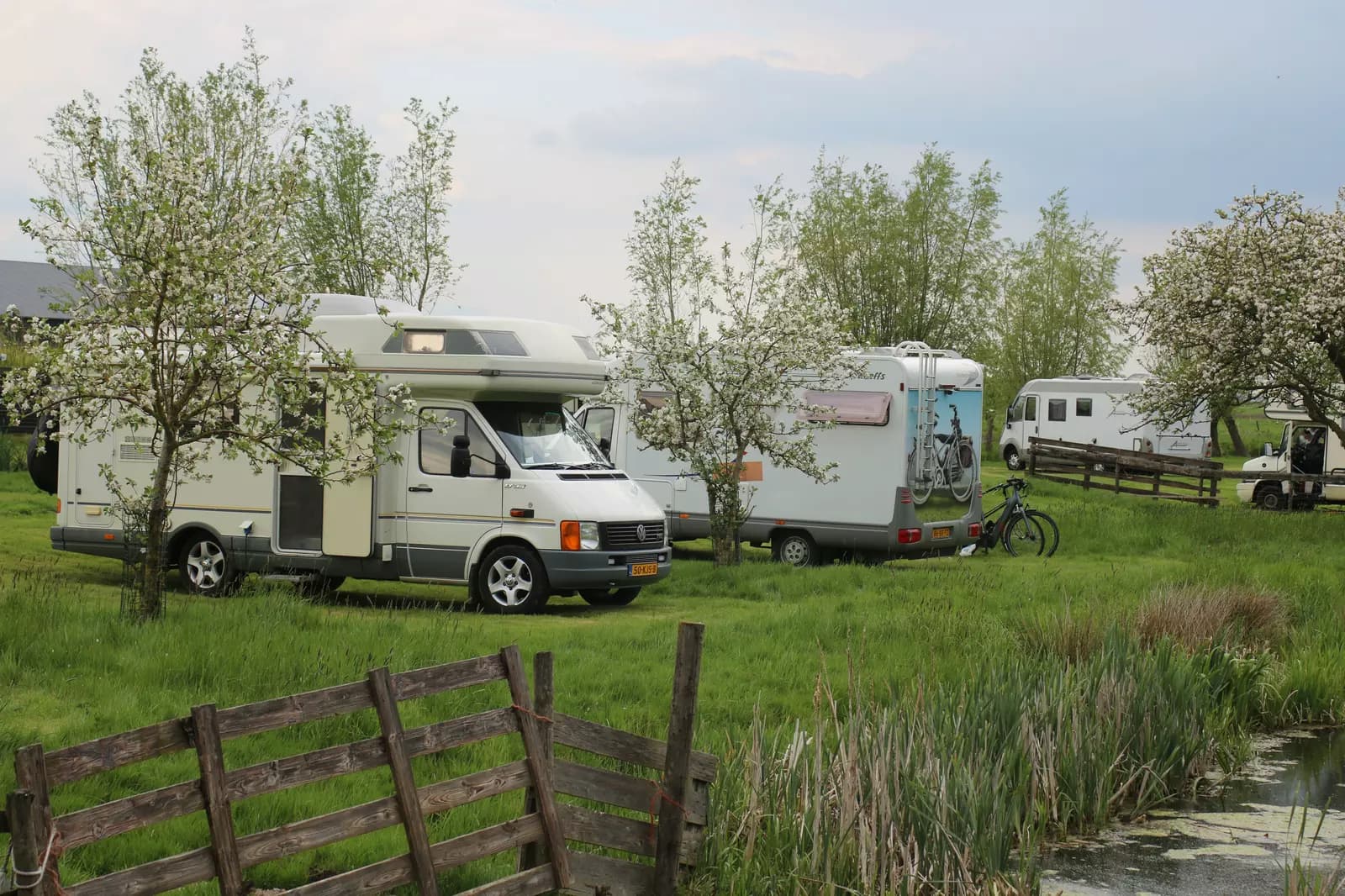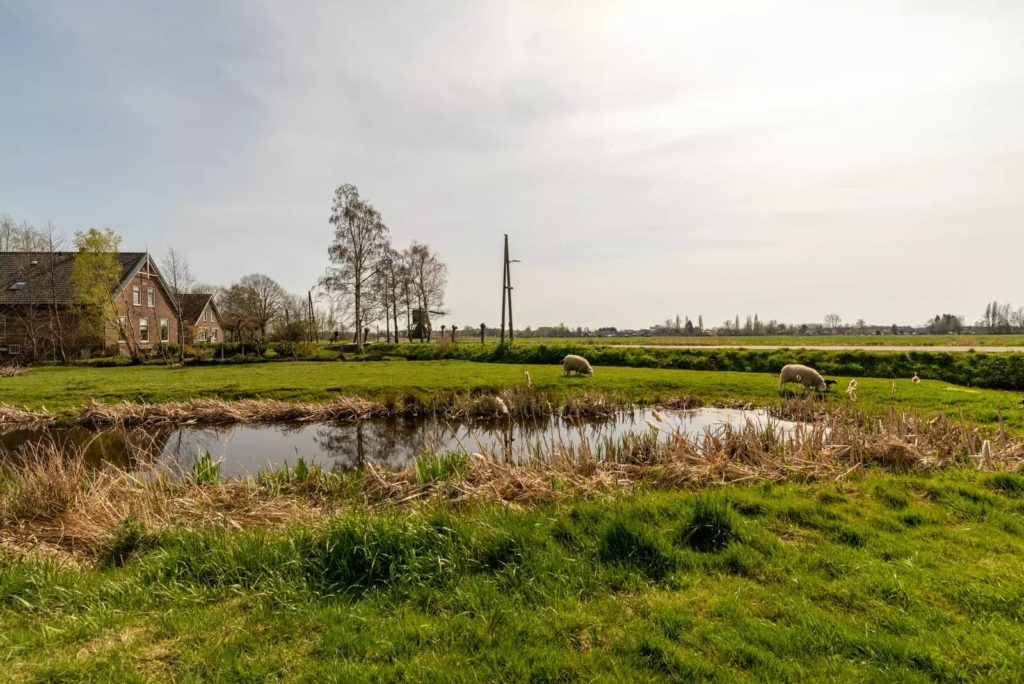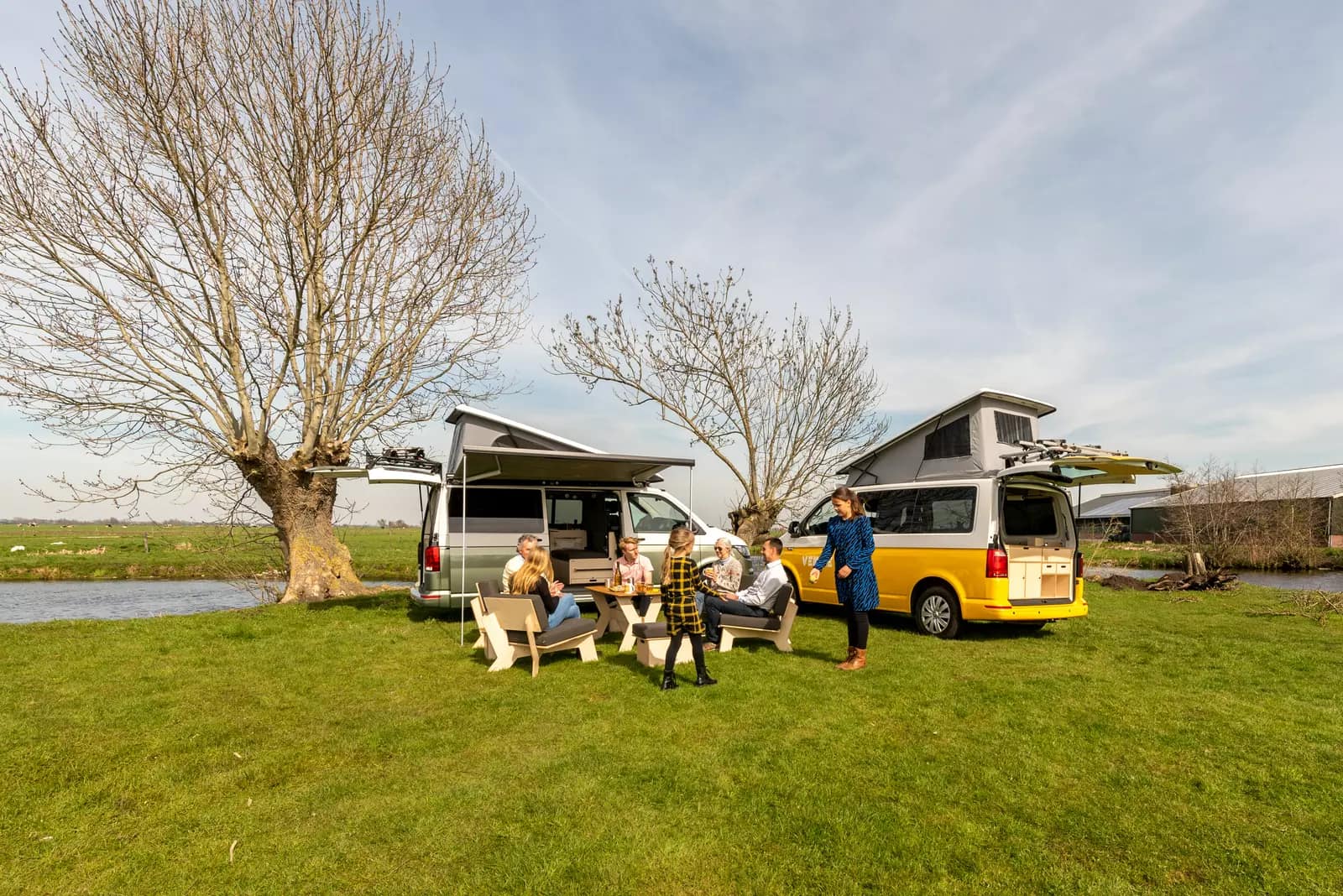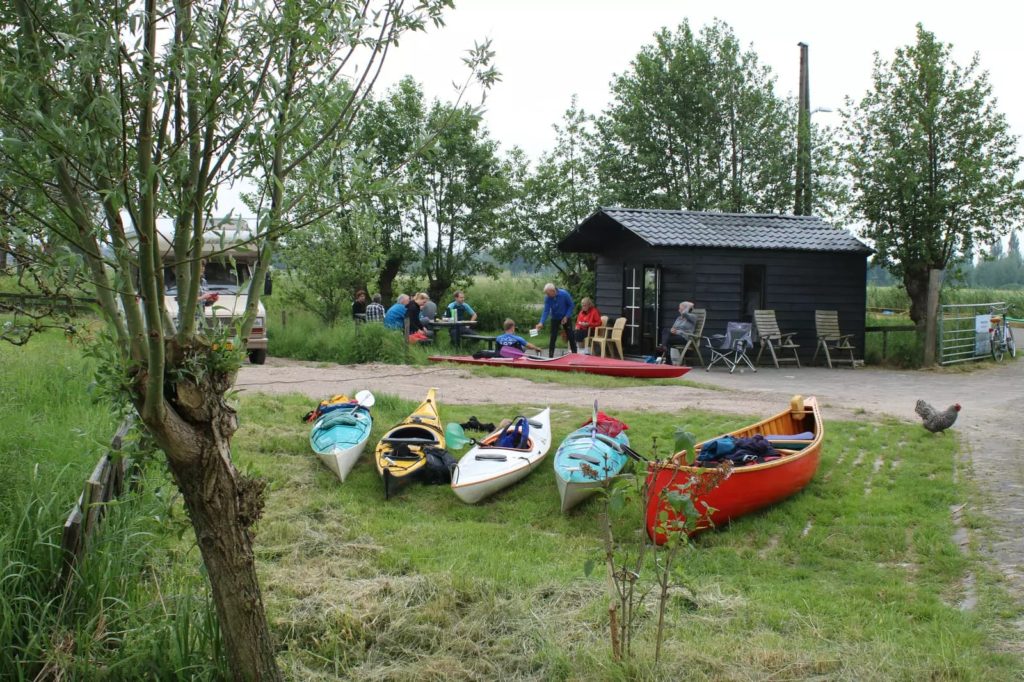
16 May This farmer combines cows and campervans to pay the bills
Farmer Jan had been running a dairy farm for 15 years when he opened his farmland to campervans. For him, starting an RV park on the side was the easiest thing.
It’s spring in the hinterland of South-Holland. Lambs run about under a sky dotted with clouds drifting out of a Rembrandt painting. A farmer overlooks the Krimpenerwaard polder – grazing cows, willows lining the dikes, a windmill in the distance. What else do we spot on his patch of quintessential Dutch farmland? A colorful bunch of campervans. Jan Voets is a third-generation farmer, but he’s the first to run a campervan site on the Vlisterhoeve farm. How did Jan come up with the idea to run a campervan campsite?

COWS AND CAMPERVANS
“An acquaintance had a caravan and asked us ‘why not start an RV park?’. With dairy farm revenues decreasing, we thought ‘yeah, why not?’”. In many European countries, the financial returns of farming have been steadily decreasing. Subsidies are drying up, the social climate towards farming has shifted, and costs are rising. Adding to that and tying in with environmental goals, the emission of nitrogen oxide by cows has become the focal point of Dutch agricultural policy. It’s made running a dairy farm harder.
In a bid to keep farms financially sustainable, the Dutch government pushes farmers to diversify their income sources. Starting a mini campsite and selling regional products are some of the ways farmers can try to secure their livelihoods. Farmer Jan, a father of four daughters, does both.

Opening a campsite isn’t necessarily easy either for farmers – they need to request licenses and adhere to certain rules, as well as pay tourist taxes. Jan was lucky, though. The local municipality doesn’t quite know how to deal with campsites, so they let Jan run an RV park with 25 pitches without much hassle. Other than legalities, the process of opening a campervan space was pretty straightforward for Jan – both on and offline. “You just create an account on Campanyon, make a listing, and people show up. We already had a toilet, running water and electricity in the shed where we sell milk.”
Besides selling fresh milk from a dispenser in the shed, Jan sells some of his neighbors’ products to campervanners and passersbies. A vending machine displays fresh yogurt, cheese, eggs, and jams. Before RV’ers happily made use of the little shed’s facilities, cyclists and hikers would stop here for a rest. “Not only do a lot of cycling routes pass through here, but soon we’ll have a jetty for kayakers and fishermen.”

A fortunate storm?
With the exception of a few cows resting at the barn, most of the cows are grazing in the polder right across the water from the camper space. There are other barn animals too, like chickens and turkeys. It makes for a soothing sight that campers love. And then there’s the 25 sheep that are lambing right now. “That’s going to be another 40-50 little lambs.” Where does Jan have the space for an RV park with all those animals?
Parked among moody old willows and young fruit trees, the patch of land now reserved for campervans was once a fruit orchard. “We used to have many fruit trees on this land. It stormed heavily one day – most fruit trees were blown over and died.” Jan planted new fruit trees, but left plenty of space to host campervanners among the saplings.
Would you like to be hosted by a farmer and park your RV on farmland? Have a look on Campanyon for RV spots on farm land or farm stays across Europe.

